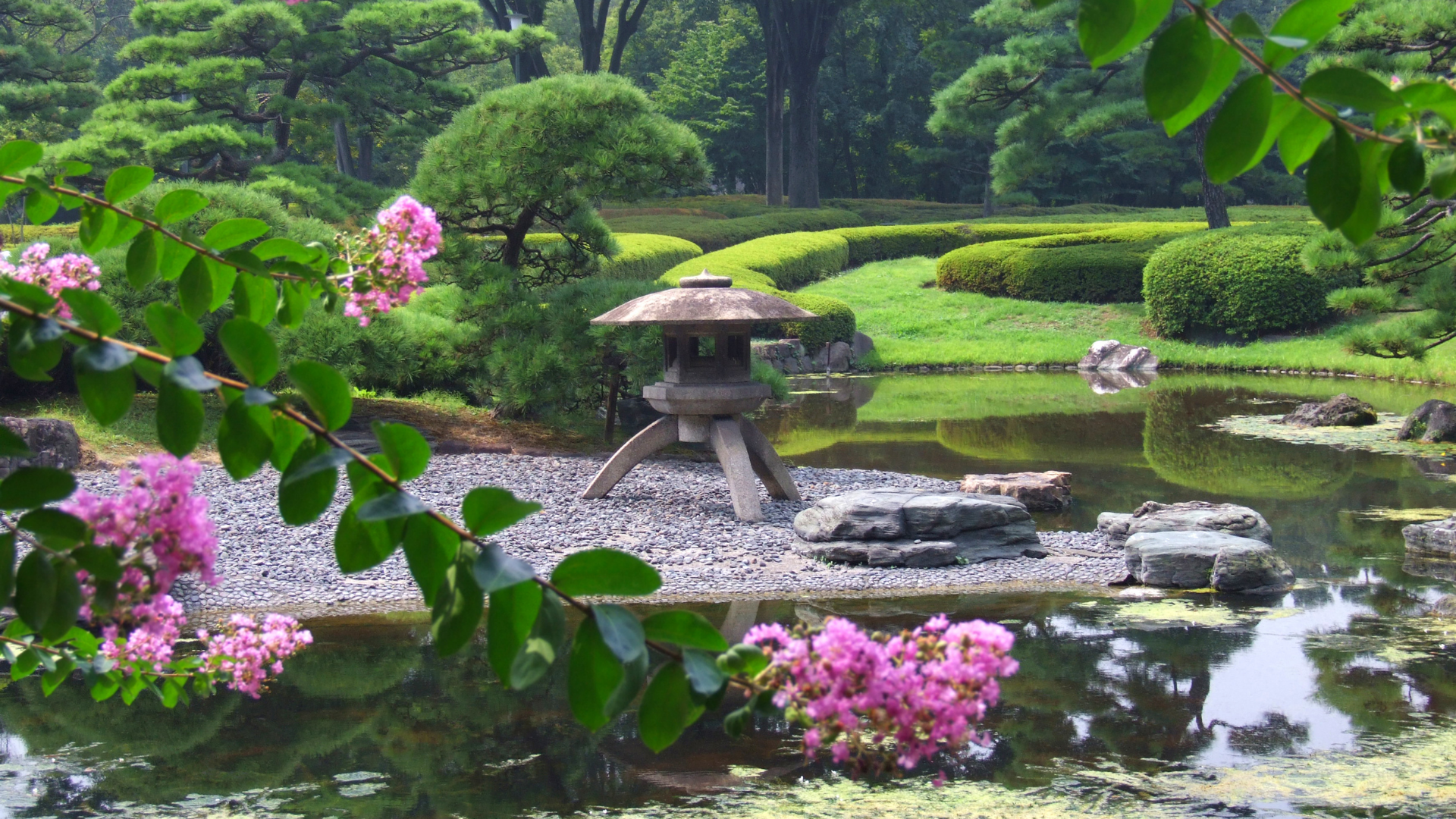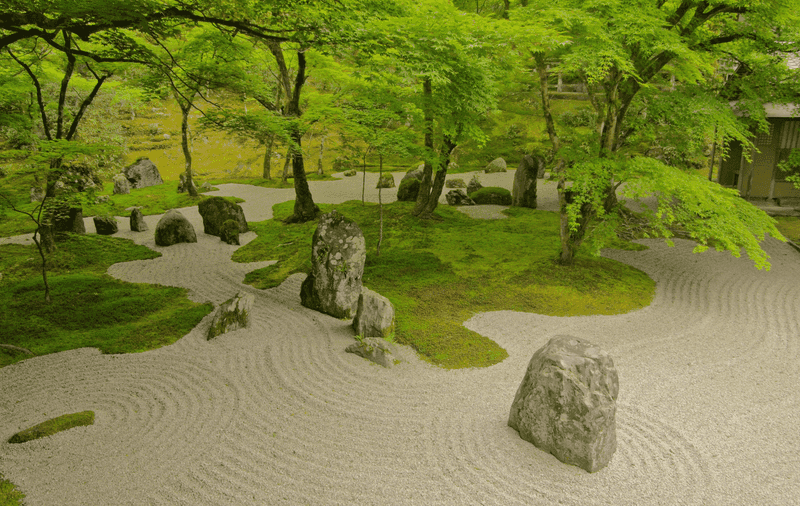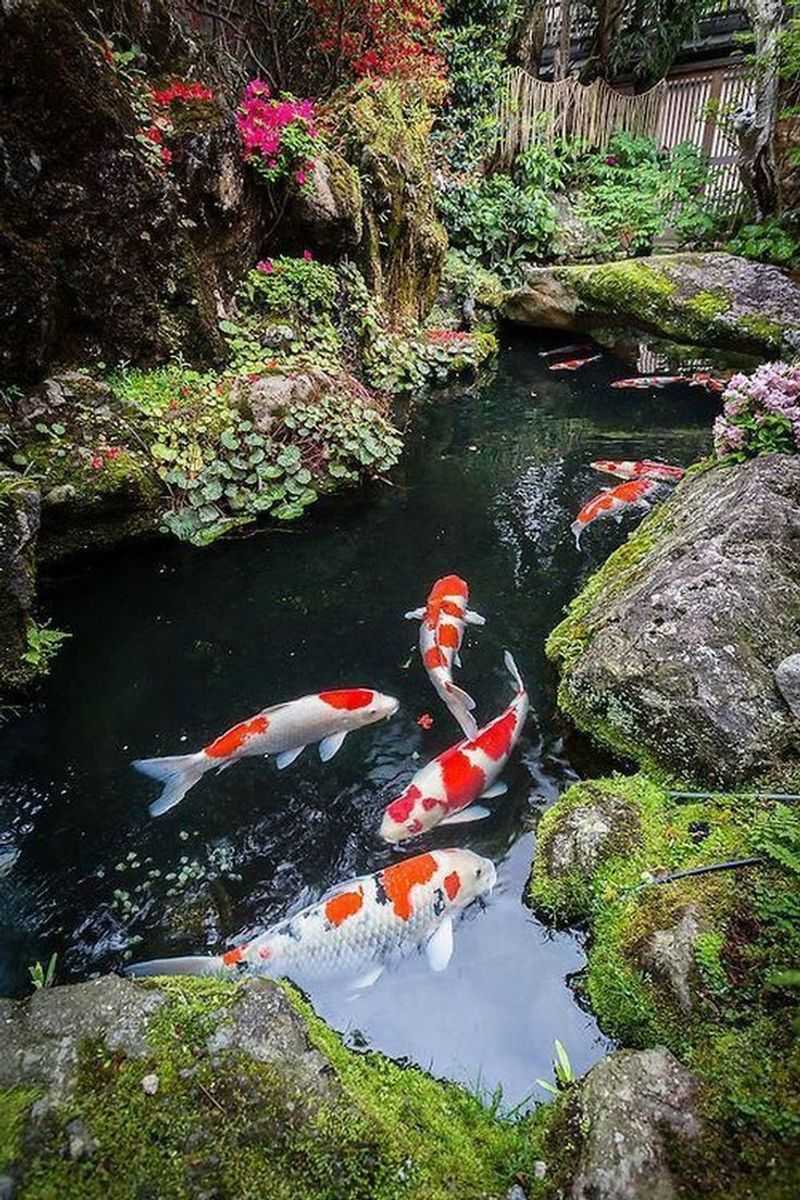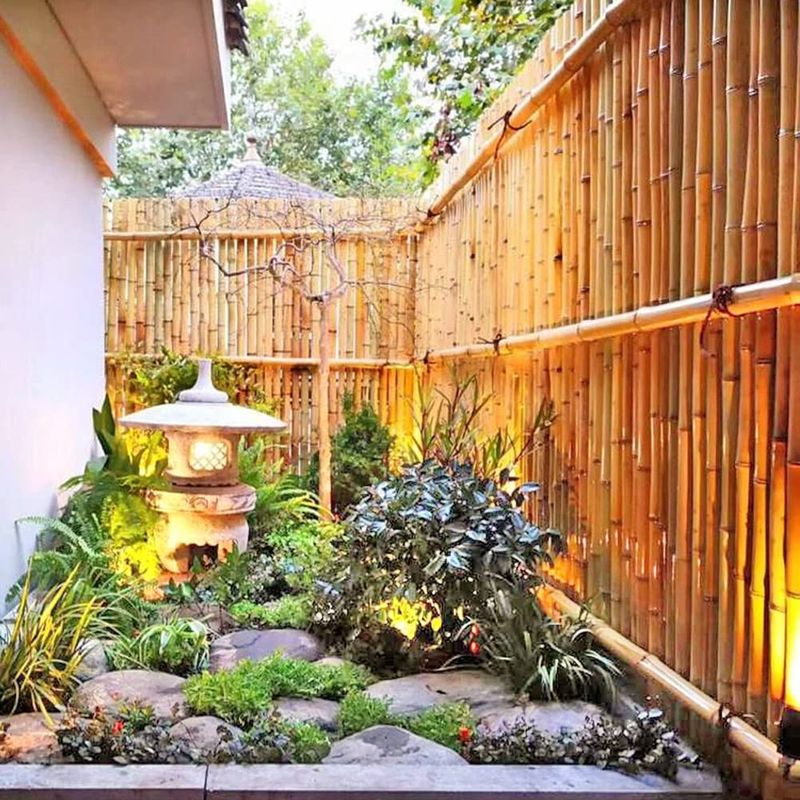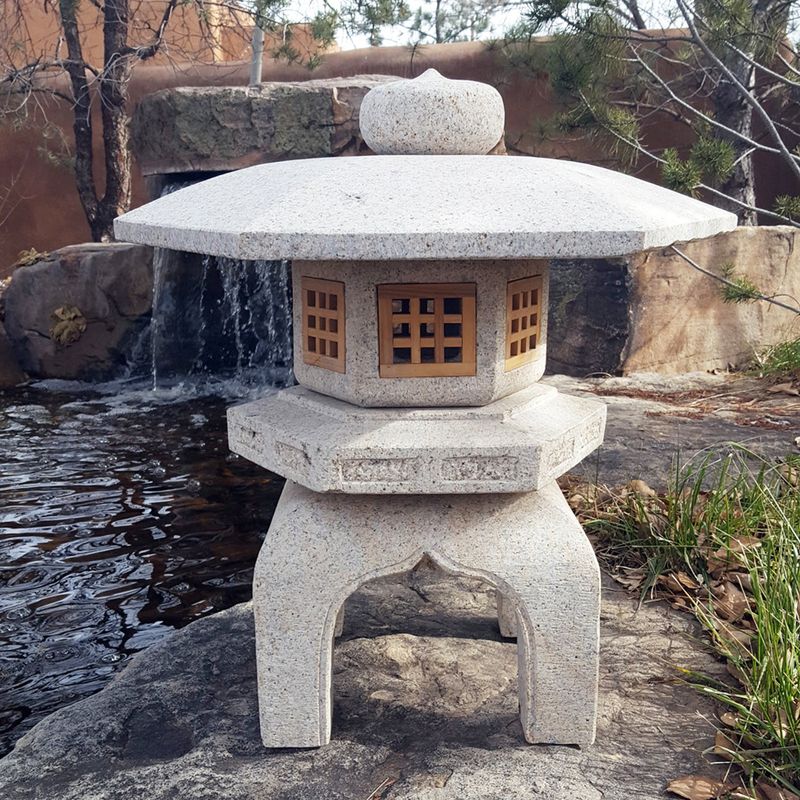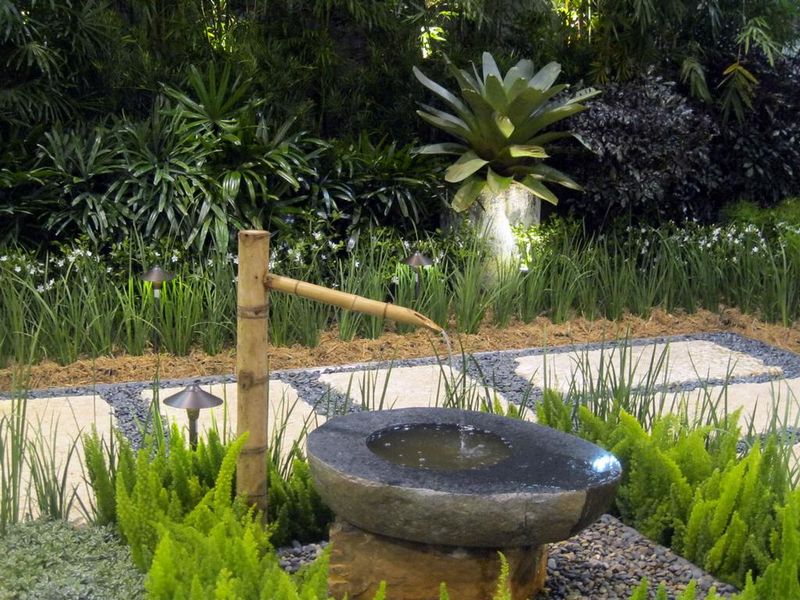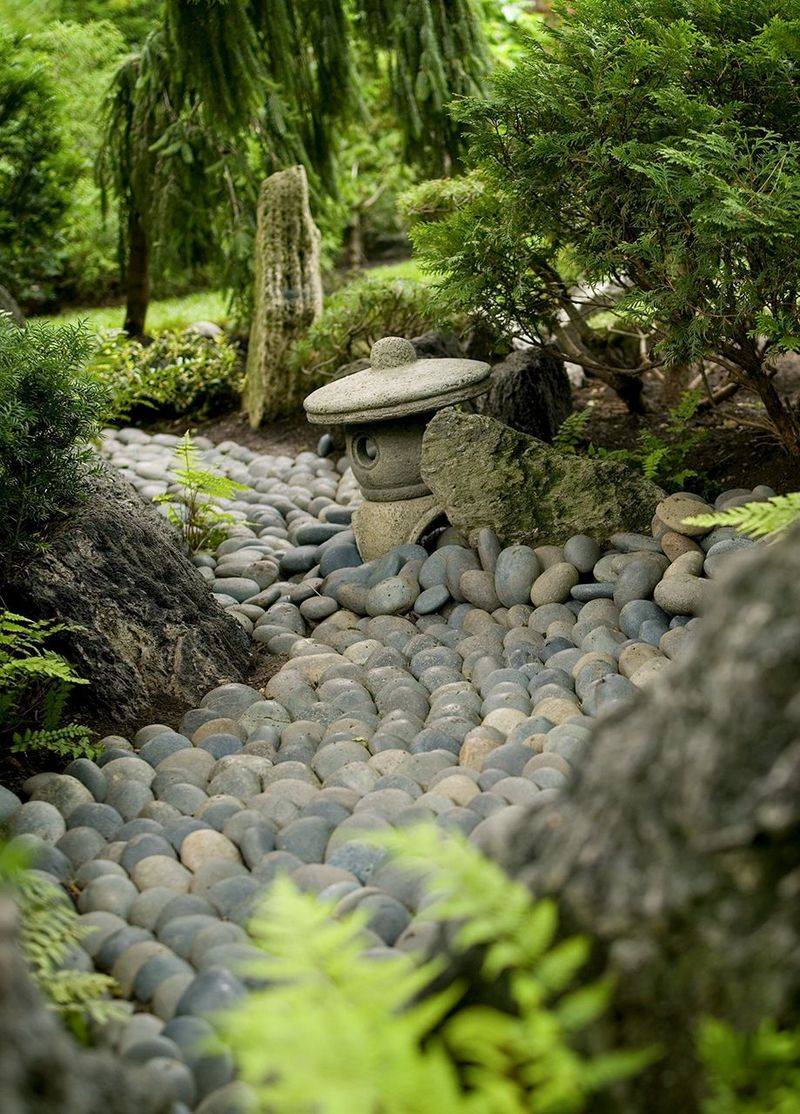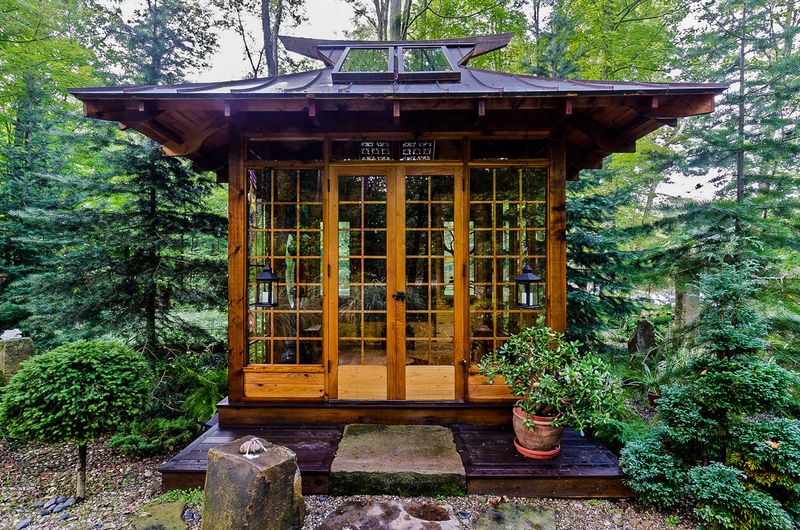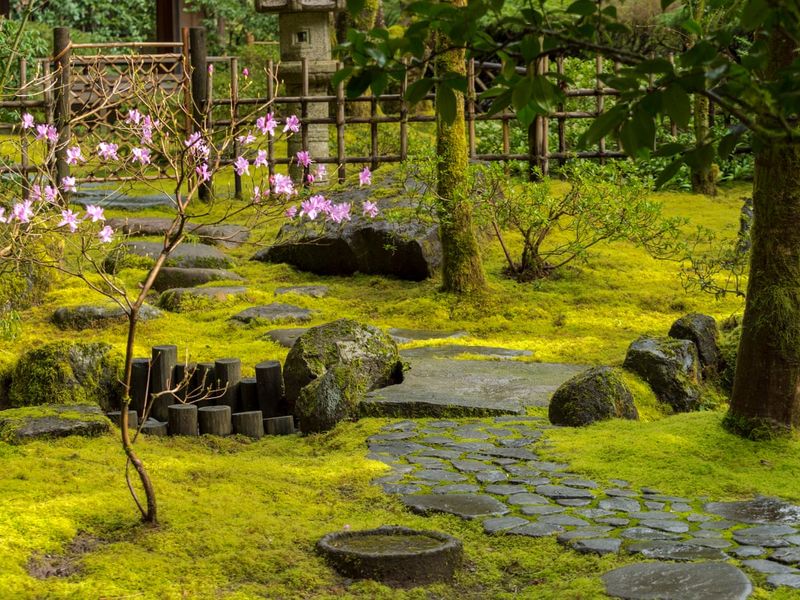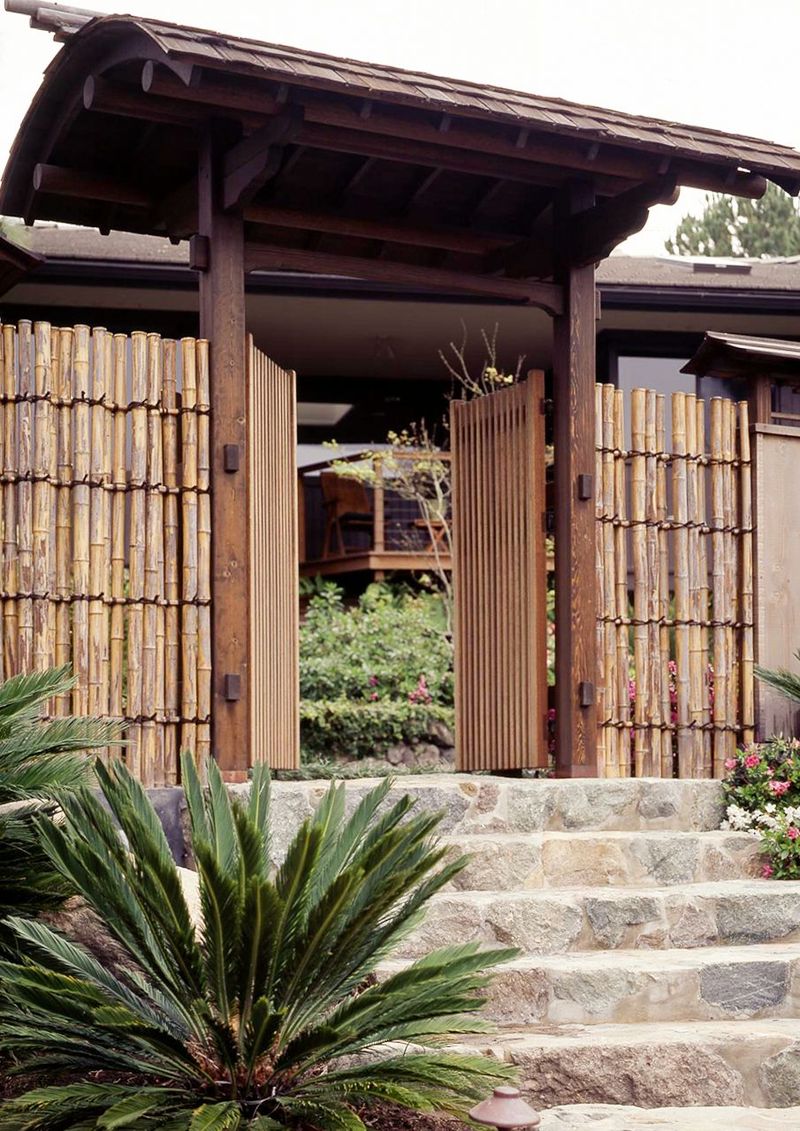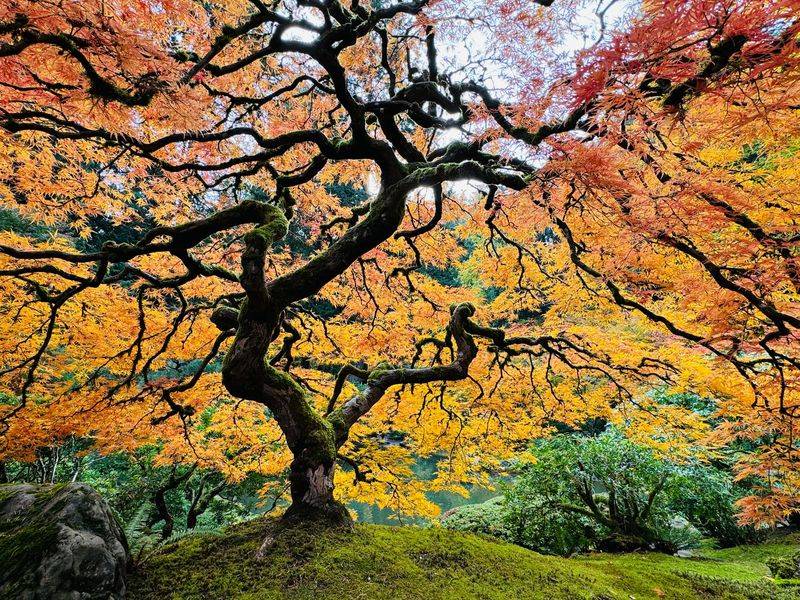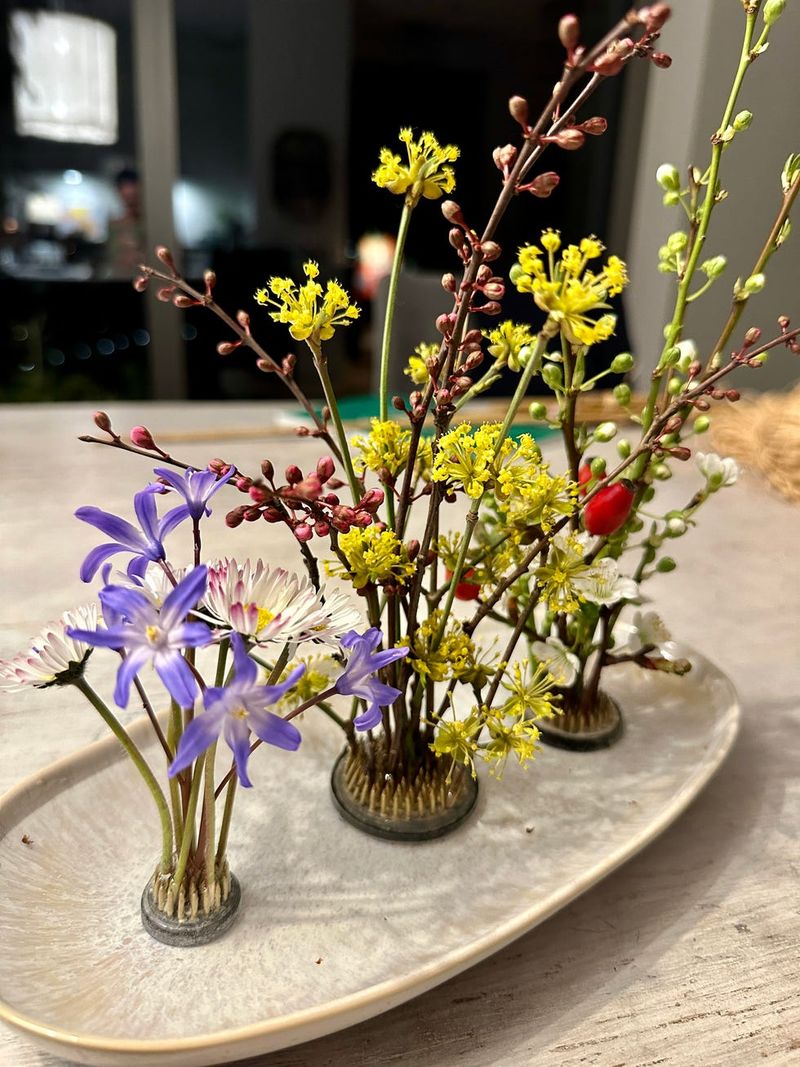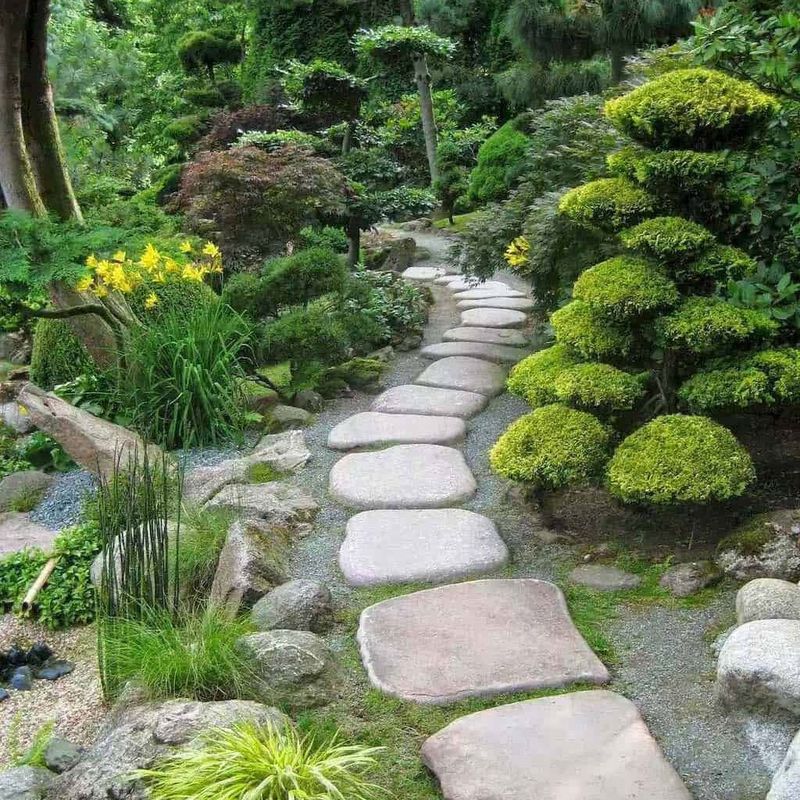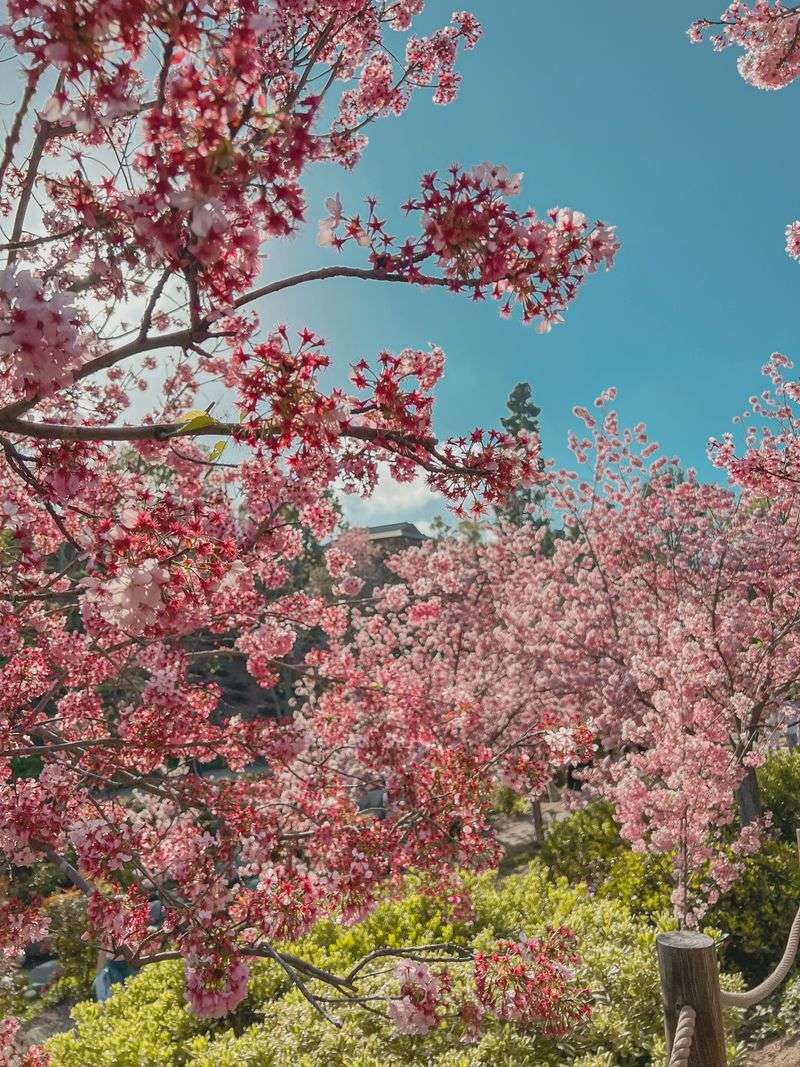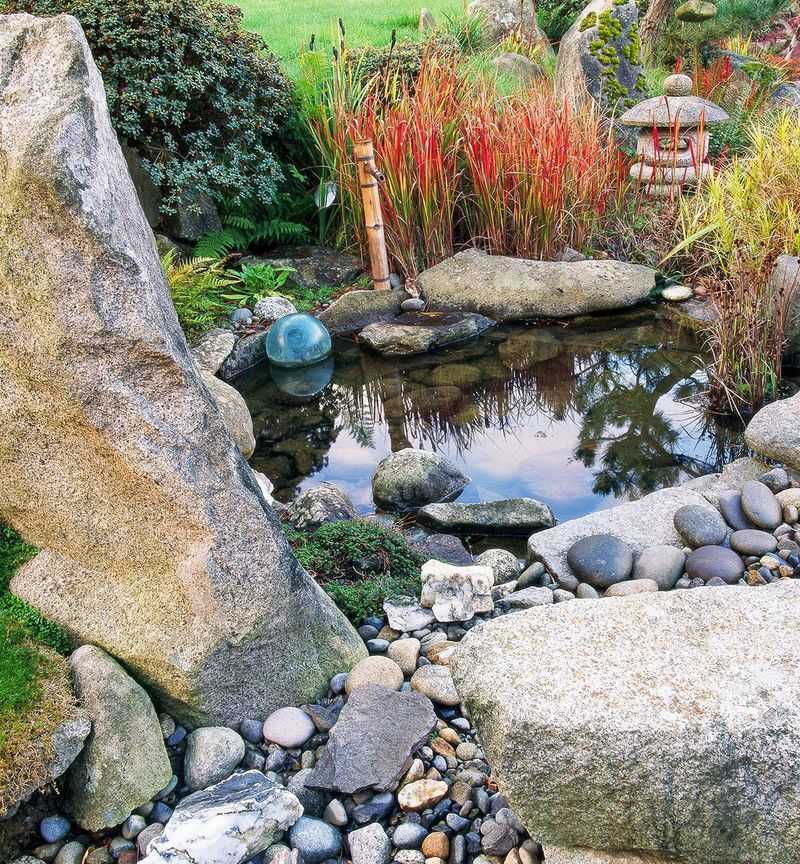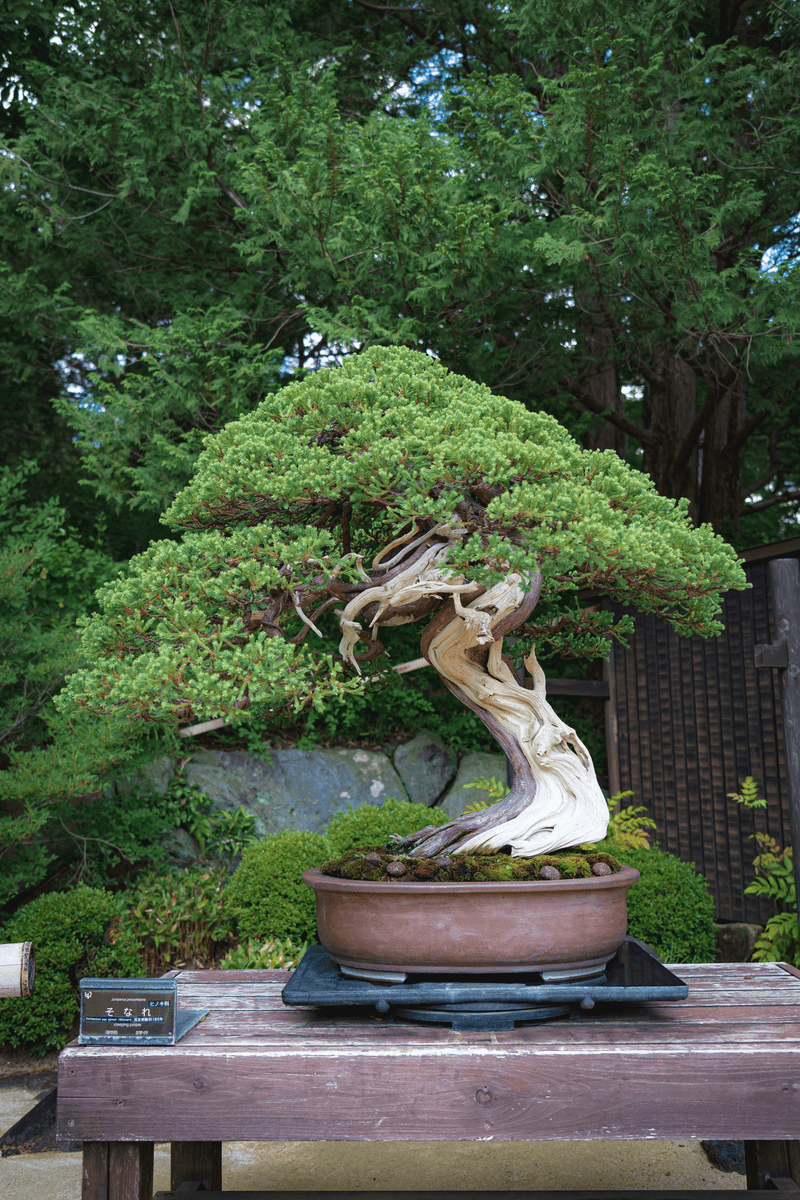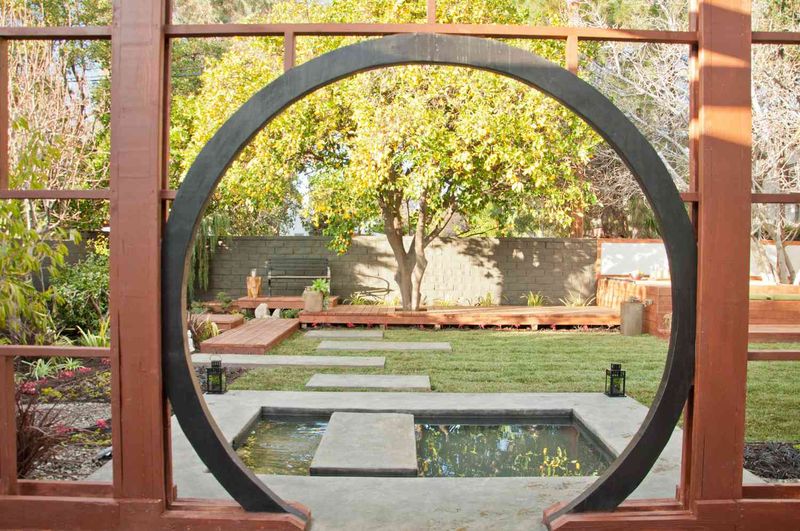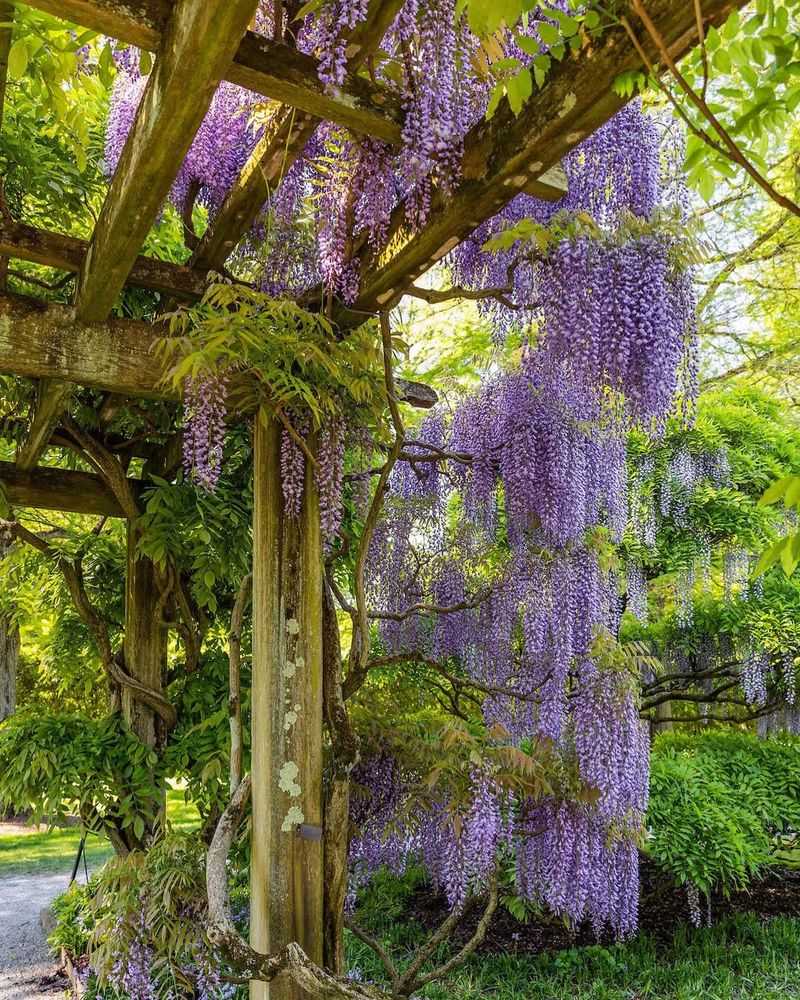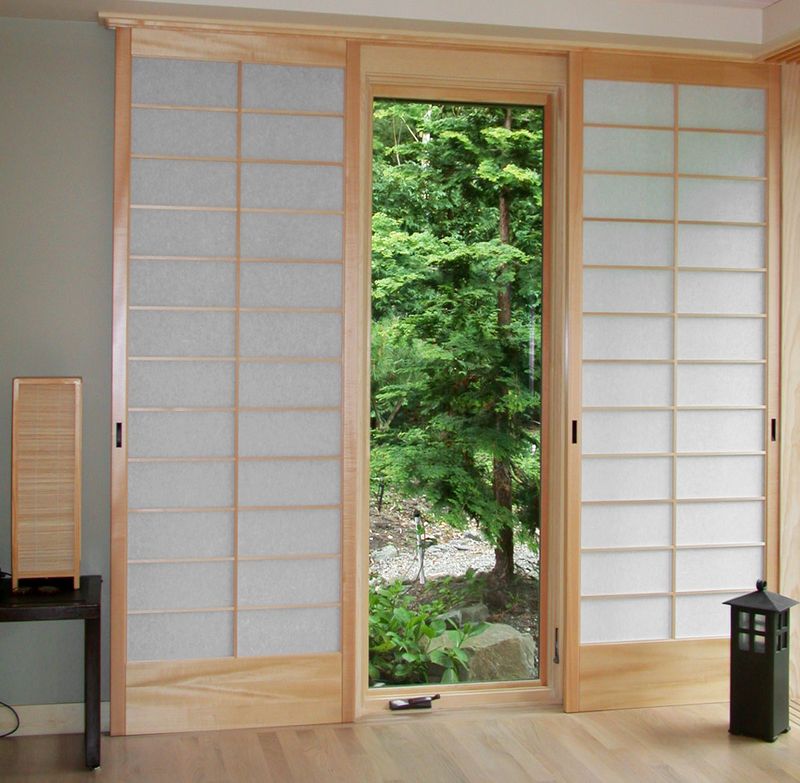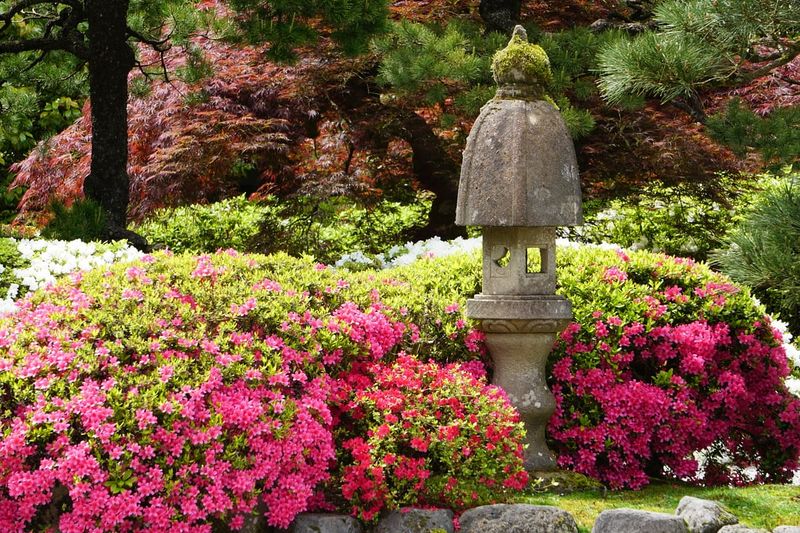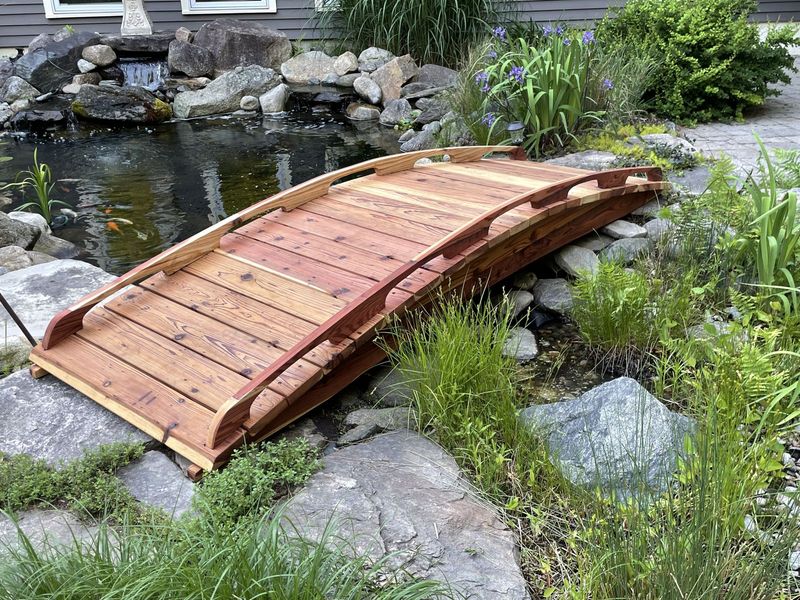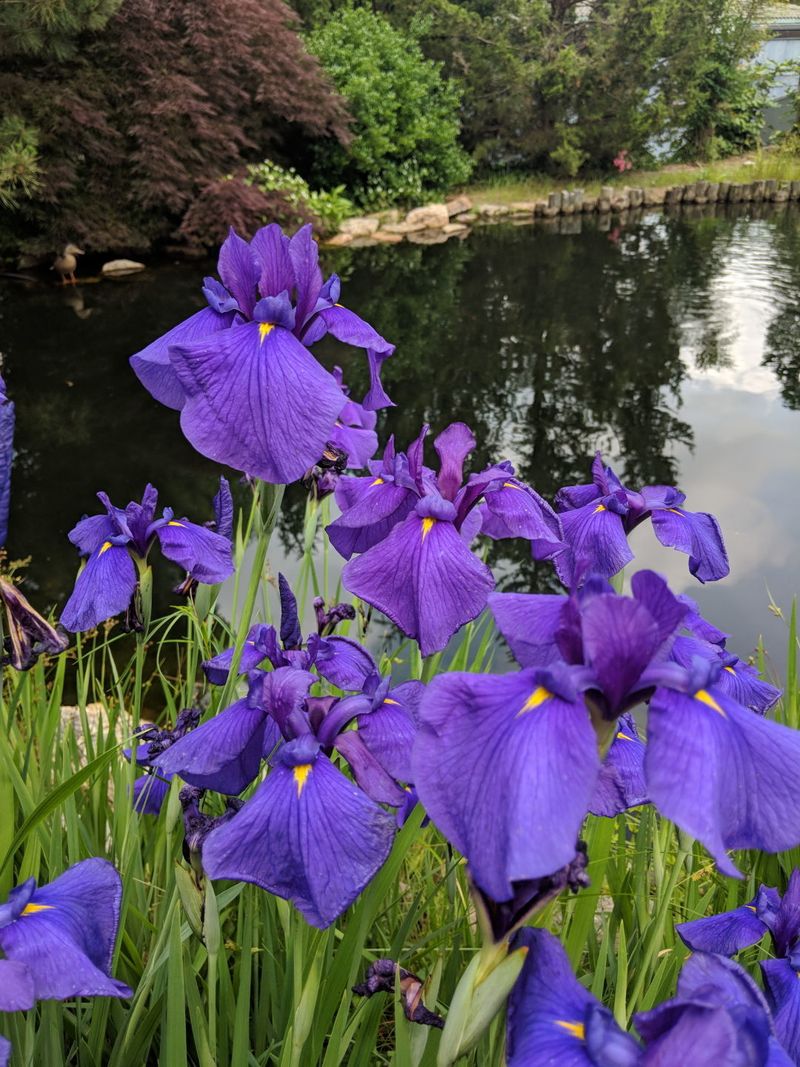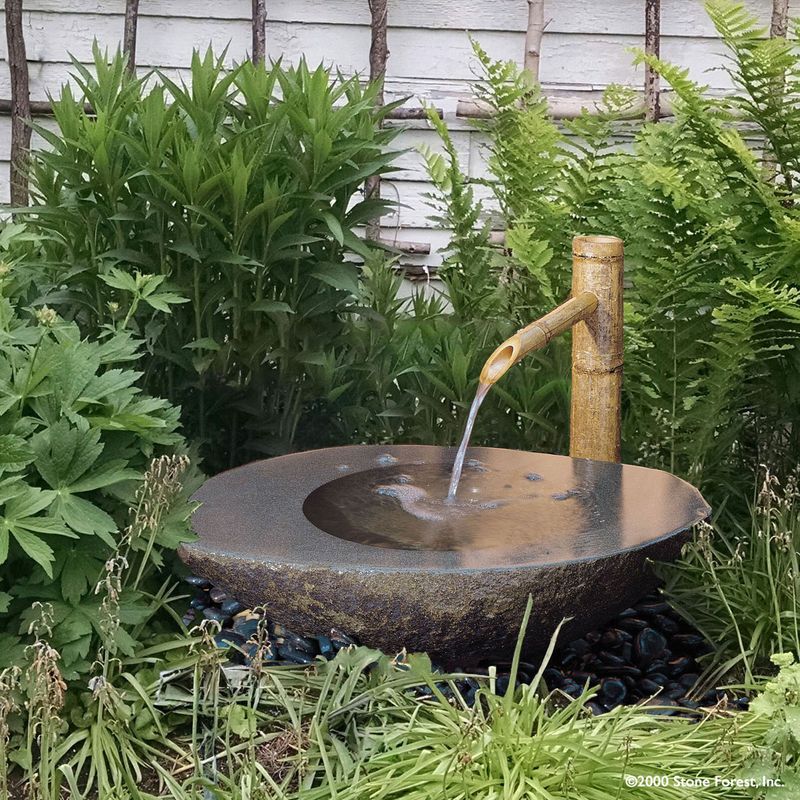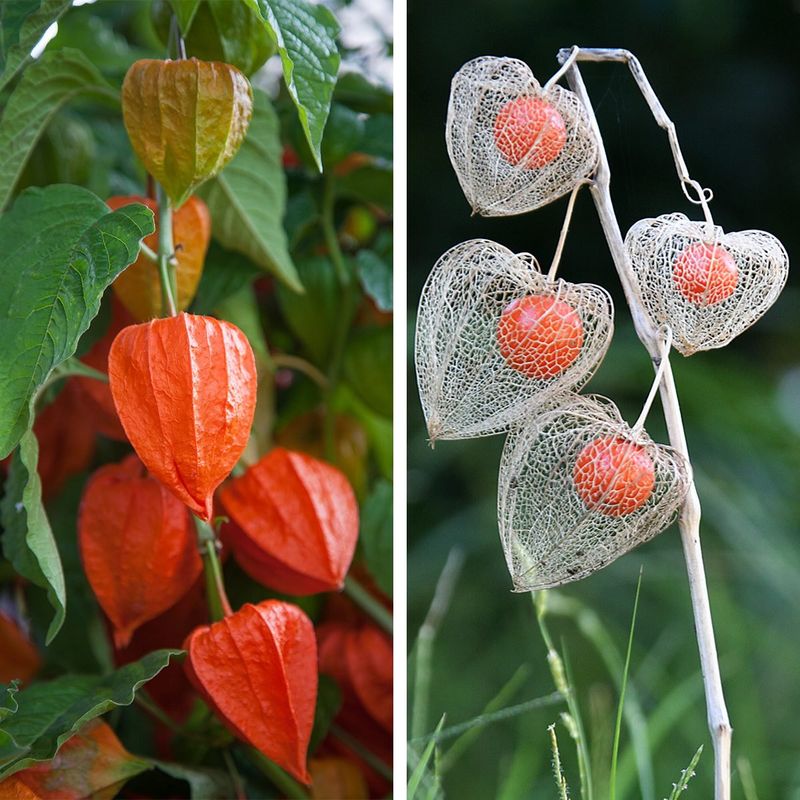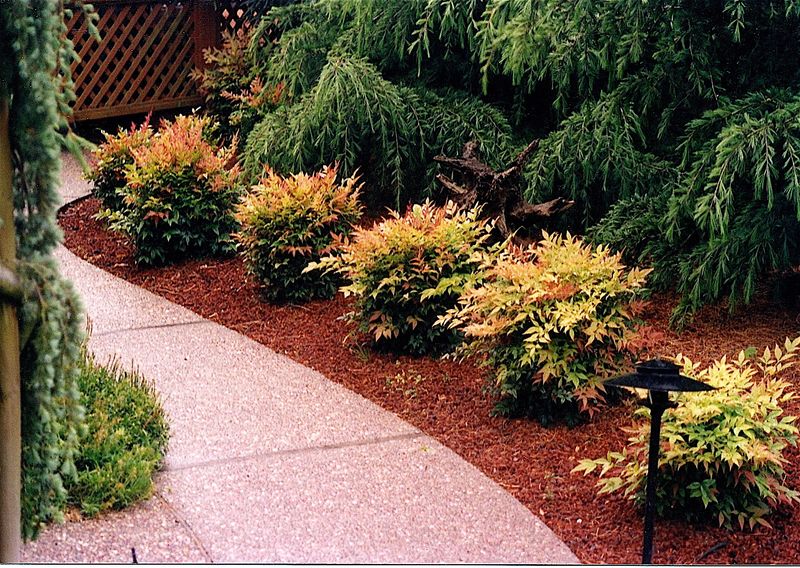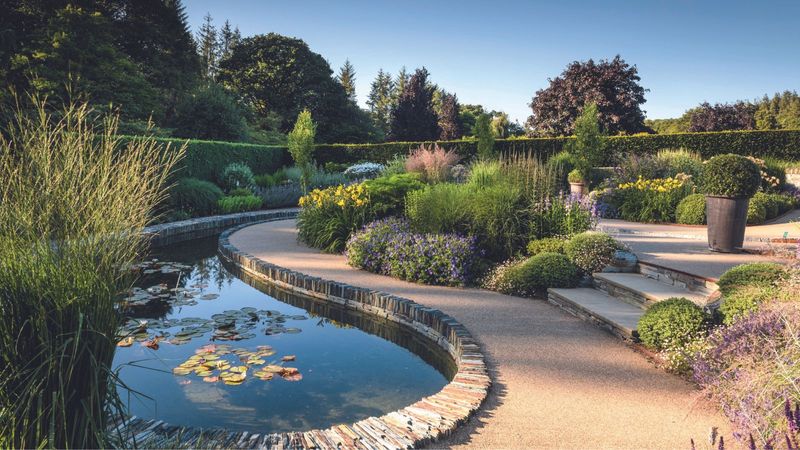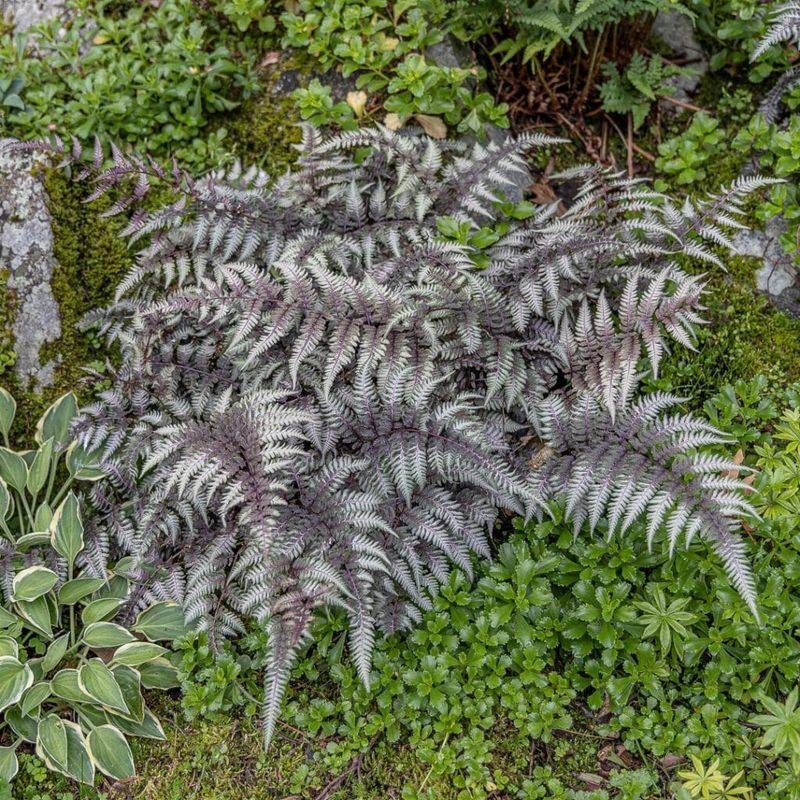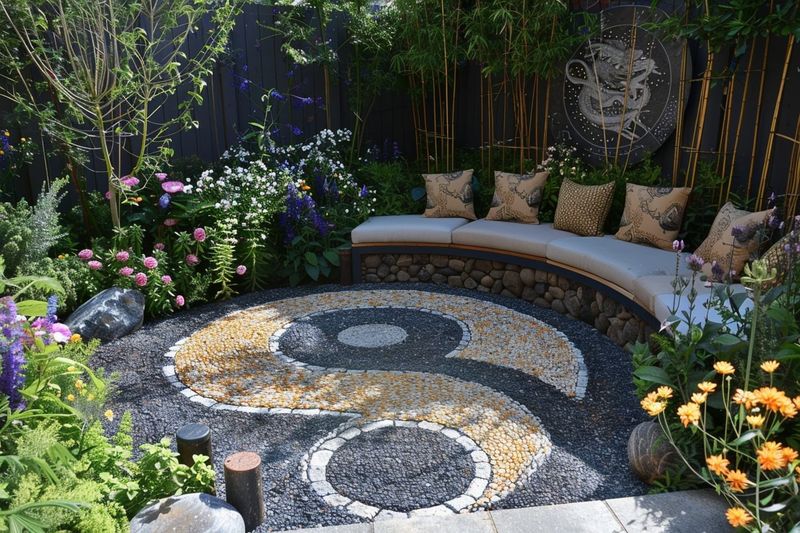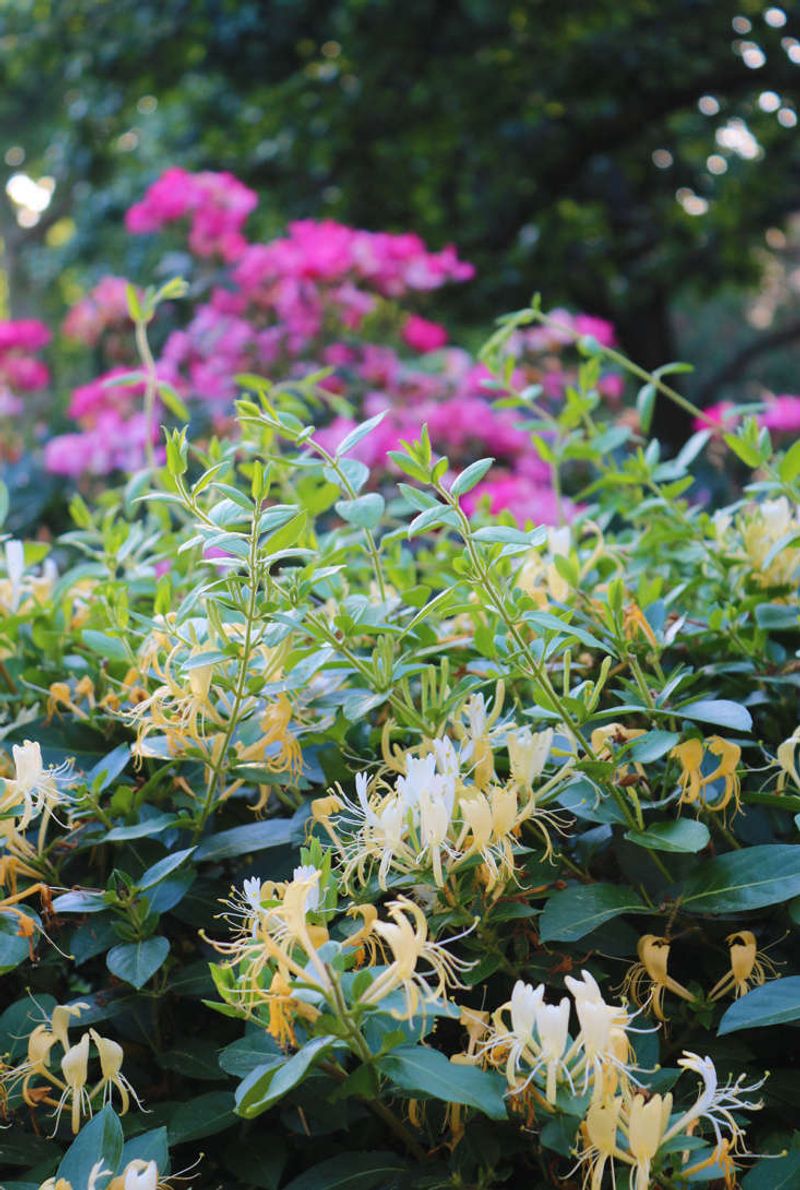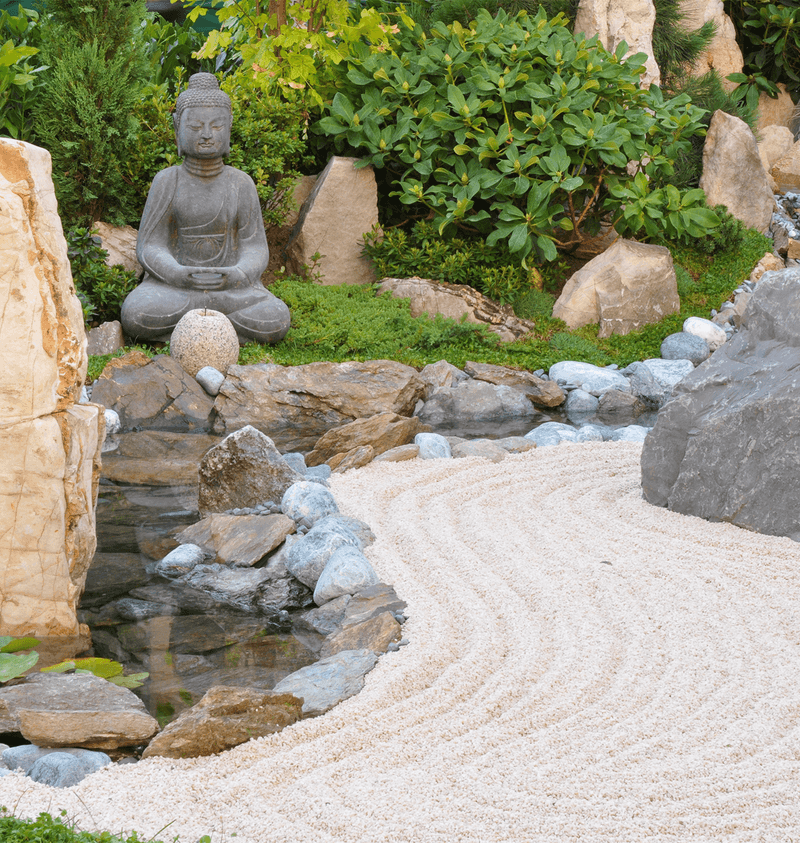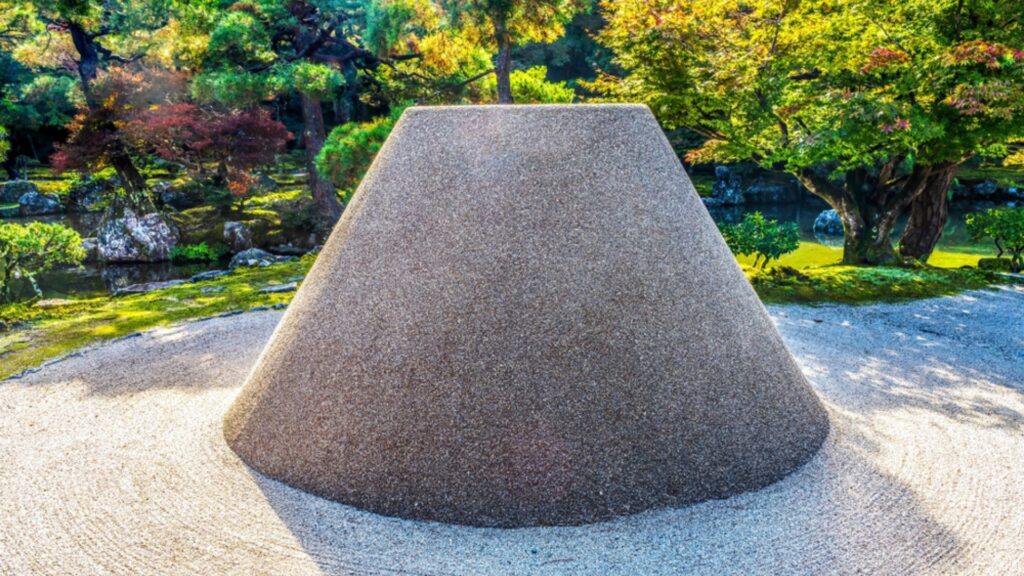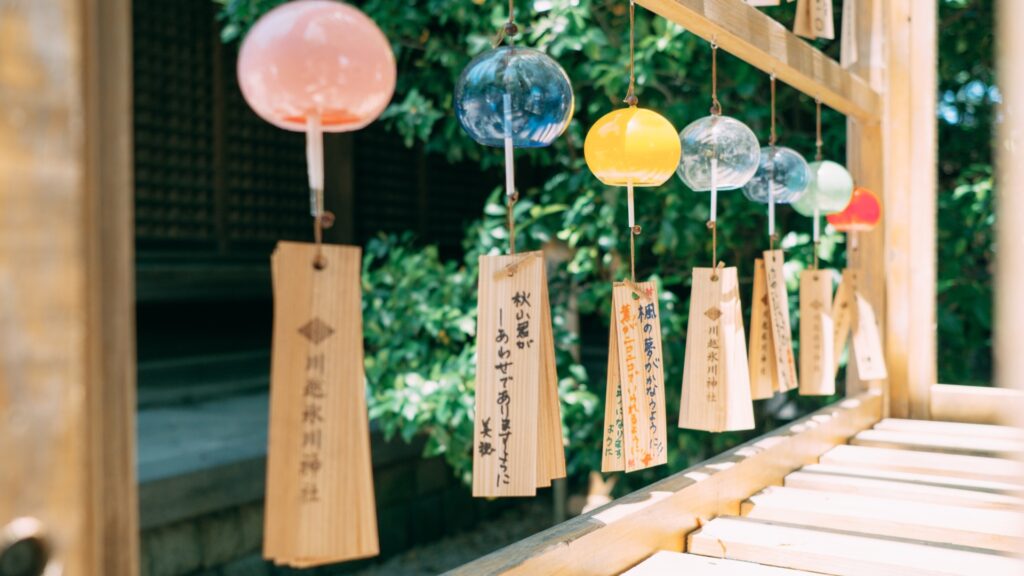Strolling through a Japanese garden is like wandering into a dream where tranquility and beauty reign supreme. These gardens effortlessly blend natural elements with meticulous design, creating an oasis of peace and inspiration.
I’ve spent countless afternoons meandering through lush landscapes, each visit sparking a new idea or connection to these picturesque paradises.
Today, I’m excited to share some of the enchanting concepts that can transform your own space into a serene retreat. Whether you’re a seasoned gardener or a newbie with a sprouting interest, there’s something here for everyone!
1. Zen Sand Patterns
Start with a blank canvas and let your imagination flow. The art of creating Zen sand patterns can be both meditative and artistic.
These patterns are not just pleasing to the eye; they also represent the flow of water and can enhance the sense of calm in your garden.
Picture yourself gently raking the sand into graceful waves, feeling a sense of peace wash over you. Who knew that sand and a rake could be the tools to tranquility?
2. Koi Ponds
Imagine a small pond teeming with colorful fish gliding smoothly through the water. Koi ponds are not only visually appealing but also bring life and movement to your garden.
Watching these fish swim can be incredibly soothing and offers a chance to connect with nature. As the koi dart and swirl, they invite a sense of harmony and balance into the space.
Plus, they’re a great conversation starter for garden visitors!
3. Bamboo Fences
Bamboo fences are like the quiet guardians of your garden. They offer privacy without feeling oppressive and integrate seamlessly with natural surroundings.
Not only do they add an organic touch to your landscape, but they also symbolize strength and flexibility.
Building a bamboo fence might just bring out your inner architect, as you design a barrier that blends beauty with function. Who knew boundaries could feel so inviting?
4. Stone Lanterns
Picture a journey through your garden, where a stone lantern stands as a beacon of light and tradition.
These lanterns add a touch of historical charm and create focal points that draw the eye. As dusk settles, the gentle glow guiding your path might just transport you to another time.
Incorporating a stone lantern is like adding a piece of history to your own backyard. It’s not just a decoration; it’s a connection to a timeless art form.
5. Water Features
The sound of flowing water can turn any garden into a serene escape. Adding a water feature not only enhances visual appeal but also brings tranquility through sound.
Imagine sitting by a gentle waterfall, the soft murmur inviting a moment of meditation. Whether it’s a bubbling fountain or a trickling stream, water features offer a sensory experience that’s hard to resist.
They say still waters run deep, but flowing ones bring peace.
6. Stone Pathways
Winding through your garden on a stone pathway can feel like embarking on a journey. These paths guide visitors while adding texture and structure to the landscape.
Each step on the stones can be a moment of mindfulness as you explore the beauty around you. Crafted from natural materials, stone pathways blend seamlessly with the environment, offering both function and beauty.
Who knew stones could lead the way to serenity?
7. Tea Houses
Step into a space where time slows down, and the simple act of sipping tea becomes an art form.
A Japanese tea house invites contemplation and connection, providing a dedicated area for relaxation. Its architecture and surroundings promote a sense of calm and reflection.
Imagine hosting a tea ceremony, where the ritual itself becomes a meditative experience. A tea house offers more than just tea; it offers a pause in a busy world.
8. Moss Gardens
Moss gardens embody subtle elegance and require minimal maintenance. The emerald carpet offers a soft contrast to hardscapes, inviting touch and texture into your garden.
Moss thrives in shaded areas, creating a lush ground cover that feels like a natural extension of the landscape.
As you walk through a moss garden, you might find yourself slowing down, appreciating the quiet beauty. It’s nature’s way of telling you to take a breather.
9. Pagodas
Pagodas add an architectural element that feels both exotic and familiar. These tiered structures serve as focal points, drawing the eye upward and offering vertical interest.
Imagine the silhouette of a pagoda against the evening sky, its presence grounding the garden in tradition.
Incorporating a pagoda isn’t just about aesthetics; it’s about creating a space that inspires contemplation. It’s like giving your garden a touch of the sky.
10. Japanese Maple Trees
Japanese maple trees offer stunning foliage that changes with the seasons, bringing dynamic color to your garden.
These trees are more than just a pretty face; they symbolize beauty and endurance. As the leaves shift from green to lively shades, they mirror the changing cycles of life.
Planting a Japanese maple can be a long-term investment, promising years of beauty. It’s like planting a living, breathing piece of art.
11. Ikebana Floral Arrangements
Ikebana is the art of flower arranging that emphasizes harmony and balance. Unlike traditional bouquets, ikebana focuses on simplicity and thoughtful placement.
It’s more than decoration; it’s a philosophy. Imagine taking a few blooms and arranging them with intention, finding beauty in the negative space.
This practice can transform how you view flowers and nature. It’s not just what you see; it’s how you see it.
12. Stepping Stones
Stepping stones create pathways that are both functional and playful. As you hop from one stone to the next, there’s a sense of whimsy in the journey.
These stones guide your steps, offering a tactile connection to the earth. Arranging stepping stones can transform a simple crossing into an engaging experience.
Each step is a deliberate choice, a reminder to enjoy the journey as much as the destination. It’s an adventure in your own backyard.
13. Cherry Blossom Trees
Cherry blossom trees are synonymous with beauty and the fleeting nature of life. When in bloom, they create a canopy of ethereal pink that captures the essence of spring.
These trees remind us to cherish the present moment, as their blossoms last only a short time. Planting a cherry blossom tree is like adding a seasonal spectacle to your garden.
It’s a celebration of life’s transience, inviting you to pause and appreciate the now.
14. Rock Gardens
Rock gardens emphasize simplicity and the art of placement. By arranging stones, you can create a landscape that feels both natural and sculpted.
These gardens invite contemplation, offering a space to reflect and meditate. Imagine designing a scene where each rock tells a story, its position chosen with care.
Rock gardens can transform a small area into a peaceful retreat, proving that less is often more. It’s like writing poetry with stones.
15. Bonsai Trees
Bonsai trees are living art, requiring patience and skill to cultivate. Despite their small size, they embody the grandeur of full-sized trees.
Bonsai gardening is a practice in mindfulness, inviting you to engage with nature on a miniature scale. As you prune and shape the tiny branches, you become part of a tradition that values form and detail.
Bonsai care is an ongoing journey, where growth is slow but rewarding. It’s a dance with nature’s smallest giants.
16. Ornamental Grasses
Ornamental grasses bring movement and texture to any garden. Their graceful sway adds a dynamic quality that contrasts with static elements.
These grasses are hardy and adaptable, thriving in various conditions. As the wind rustles through the blades, they create a gentle symphony that enhances the sensory experience.
Planting ornamental grasses can redefine your garden’s rhythm, proving that even the simplest plants have a story to tell. It’s like composing a melody with nature.
17. Wisteria Vines
Wisteria vines transform structures with their cascading blooms and enchanting fragrance. These vines can turn an ordinary pergola into a floral haven.
As the clusters of flowers dangle overhead, they create a living canopy that invites you to linger. The sweet scent and colors create an inviting atmosphere.
Growing wisteria is like crafting a living tapestry, where every bloom adds a new thread. It’s an invitation to walk among the flowers, wrapped in their perfume.
18. Shoji Screens
Shoji screens provide privacy and light, offering a harmonious blend of function and beauty. These screens can transform indoor spaces by connecting them with nature.
The delicate paper filters light, creating an atmosphere of tranquility. As you slide a shoji screen, the room becomes a canvas for shadows and light.
Incorporating these screens is like inviting serenity into your home, where nature and architecture dance in harmony. They’re not just partitions; they’re portals to peace.
19. Japanese Azaleas
Japanese azaleas burst forth in a spectacular display of color each spring. These shrubs provide seasonal interest and can be the highlight of any garden.
Their blossoms are not only beautiful but also resilient, thriving in various climates. As you admire the azaleas, their hues create a lasting impression.
Planting them offers a chance to celebrate the changing seasons. They’re like nature’s fireworks, marking the arrival of spring with a burst of color.
20. Garden Bridges
Garden bridges can transform a simple crossing into an enchanting journey. These structures offer both function and aesthetic, seamlessly connecting different garden areas.
As you stroll across, there’s a sense of transitioning from one world to another. The gentle arch of a bridge adds visual interest and encourages exploration.
Whether crossing water or land, a garden bridge invites you to pause and appreciate the view. It’s not just a path; it’s a passage to another realm.
21. Japanese Irises
Japanese irises bring elegance to any water feature, their petals like delicate brushstrokes in a painting. These flowers thrive in moist environments, adding height and color to your garden.
Their striking blossoms can draw the eye and complement other plantings. As you watch irises sway in the breeze, their grace is undeniable.
Planting them is like adding a touch of watercolor beauty to your landscape. They’re a testament to the artistry found in nature.
22. Stone Basins
Stone basins, known as tsukubai, offer a simple yet elegant water feature. These basins are often used in traditional tea gardens for purification rituals.
As you pour water into the basin, there’s a sense of calm and ritual. The stone’s cool surface and the water’s gentle ripple create a soothing combination.
Integrating a stone basin invites moments of reflection and mindfulness. It’s like creating a space where water and stone converse, whispering secrets of serenity.
23. Japanese Lantern Plants
Japanese lantern plants add a pop of color and intrigue to the garden. Their distinctive lantern-shaped fruits are both decorative and unusual.
As the orange husks dangle from the stems, they create a whimsical display. These plants can become a conversation starter, their unique appearance catching the eye.
Growing Japanese lanterns adds a touch of the unexpected to your garden. They’re like nature’s little surprises, hidden among the leaves, waiting to be discovered.
24. Nandina Shrubs
Nandina shrubs, also known as heavenly bamboo, offer year-round interest with their colorful foliage and berries. These shrubs are adaptable and easy to care for, making them a popular choice.
As the seasons change, nandina leaves shift colors, providing continuous visual appeal. Their red berries offer a splash of color against winter’s gray.
Planting nandina is like having a garden chameleon, ever-changing but always charming. They’re a reliable friend in the garden landscape.
25. Feng Shui Elements
Incorporating Feng Shui principles in your garden can create a harmonious balance of energy. This practice involves the thoughtful arrangement of elements like water, stone, and plants.
As you design your space, consider the flow of energy and how each component interacts. Feng Shui encourages a mindful approach to gardening, where each placement has purpose.
It’s like orchestrating a symphony of elements, each note contributing to a peaceful ambiance. Your garden becomes a reflection of balanced harmony.
26. Japanese Ferns
Japanese ferns add lush greenery and texture to shaded garden areas. Their delicate fronds create a sense of softness and movement.
These ferns thrive in low-light conditions, making them ideal for woodland settings. As you pass by, the gentle rustle of fronds invites a moment of tranquility.
Incorporating ferns can redefine your garden’s undergrowth, adding depth and dimension. They’re like nature’s artful brushstrokes, painting a canvas of green beneath the trees.
27. Yin and Yang Balance
The concept of yin and yang can guide garden design in creating balance and contrast. By pairing opposites, such as light and dark or smooth and rough, you can craft a dynamic landscape.
As you explore, the interplay of elements invites contemplation and appreciation. This approach encourages you to see beauty in contrasts and harmony in diversity.
Designing with yin and yang is like creating a garden that tells a story of balance. It’s a dance of opposites in perfect harmony.
28. Japanese Honeysuckle
Japanese honeysuckle brings fragrance and wildlife to the garden with its sweet-smelling blossoms. This climbing vine can transform a trellis into a living wall of flowers.
As the blooms release their scent, they attract pollinators and delight human senses. Growing honeysuckle is like weaving a fragrant tapestry that invites nature into your garden.
It’s an aromatic addition that adds vertical interest and sensory delight. Who knew a simple vine could offer such an olfactory adventure?
29. Zen Meditation Areas
Creating a Zen meditation area in your garden offers a space for reflection and peace. This dedicated spot can be as simple as a mat surrounded by natural elements.
As you sit, the world’s chaos fades, replaced by the gentle sounds of nature. The design encourages mindfulness and provides a sanctuary for quiet contemplation.
It’s like carving out a sacred corner where mind and garden meet. A place to breathe deeply and reconnect with the present moment.
30. Moon Viewing Platforms
Inspired by the Japanese tradition of tsukimi—or moon viewing—these raised platforms invite quiet appreciation of the night sky. Often made from wood or stone, they provide a dedicated space to gaze upward and embrace stillness under the stars.
Imagine sitting with a warm cup of tea, watching the full moon rise over your garden, its silver glow illuminating leaves and water alike.
Adding a moon viewing platform is like installing a window to the cosmos—an invitation to look up and dream a little deeper.
31. Wind Chimes (Fūrin)
Delicate and melodic, Japanese wind chimes—or fūrin—add a musical element to your garden. Traditionally made of glass, metal, or ceramic, they create soft, tinkling sounds with each passing breeze.
These chimes are more than decoration—they mark the changing seasons and enhance the sensory experience of your space.
Hang one near a doorway or along a garden path, and let its gentle notes remind you to pause. It’s like letting the wind write its own song in your sanctuary.

